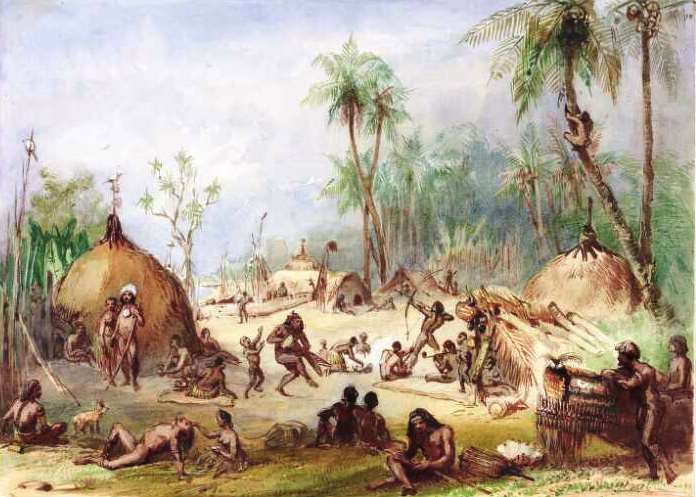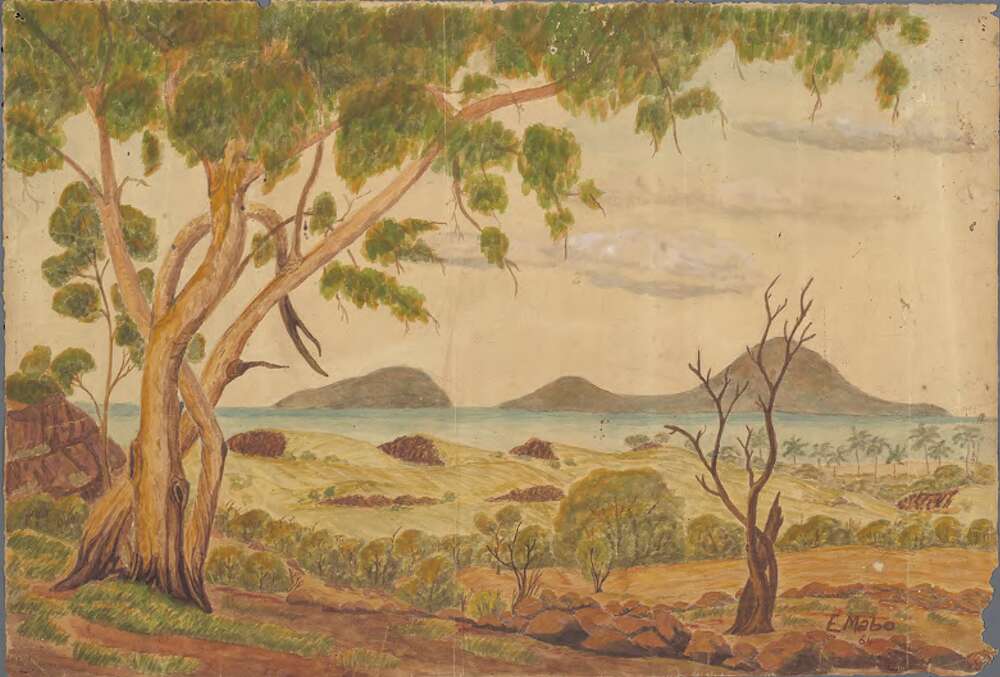
Description
The Eastern Islands cluster comprises Darnley Island (Erub), the Murray Island Group (Mer, Dauar, Waier) and Stephen Island (Ugar). The Eastern Island cluster has high level volcanic islands, characterised by fertile soil and dense vegetation. They are located in the eastern end of the Torres Straits within sight of the Great Barrier Reef.
Christianity was first introduced to Darnley and the Torres Straits region by the London Missionary Society on 1 July 1871. Before this, pearlers and beche-de-mer gatherers visited the islands. Over many years, these industries attracted an influx of seamen from the Pacific Islands, the Philippines and Malaya, many of whom married local women and settled on the island. The Murray islands are the home of the famous "Mabo Case" which resulted in the Australian High Court decision to grant native title to the Meriam people.
The effective community language is Brokan (Torres Strait Creole), though many people still speak Meriam Mir, the traditional language.
These distinct cultural and geographical characteristics define the Eastern Islands as a region and people. The material listed in this section of the guide includes unpublished material such as letters, photographs, paintings and diaries referring to the Islands and people. Please note that the individuals who were interviewed or photographed may not have been in the Eastern Islands cluster at the time of recording.
Each Island has been categorized with related material which can be viewed in more detail by clicking on the related link to the Library's catalogue record. If a photo is included a link will also be provided to it's catalogue record.
Erub - Darnley Island
Manuscripts
- Torres Strait Islands mission related correspondence and photographs, 1907-1933 - MS 10158 (MSAcc15.038)
This collection contains letters exchanged between a local Yorke Island girl, Elma Mosby, and niece of Missionary Reverend William MacFarlane, Grace Wyly. These innocent letters are focused around Elma wanting a bible and life around the Church. It also is an early personal letter from a Torres Strait Islander. Further, there are photos that depict the lives of well-known early Torres strait Islander priests, Lui and Passi. The collection also shows daily life on Thursday Island, Murray Island, Yorke Island and Dauan Island. The photographs in the collection show the erection of the All Saints Church on Erub, an earlier form of dancing equipment, and lifestyles in the early 1900's and the heavy influence of Christianity.
Pictures
- Rex Nan Kivell Collection
Comprising over 13700 catalogued items, the collections of Rex Nan Kivell include the following two hand-coloured sketches depicting early contact with Darnley Islanders prior to the arrival of Christianity and introduction of colonialism:
Huts and islanders of Darnley Island, Torres Strait, 1849
This sketch depicts Darnley Islanders in front of a traditional style hut in 1849.
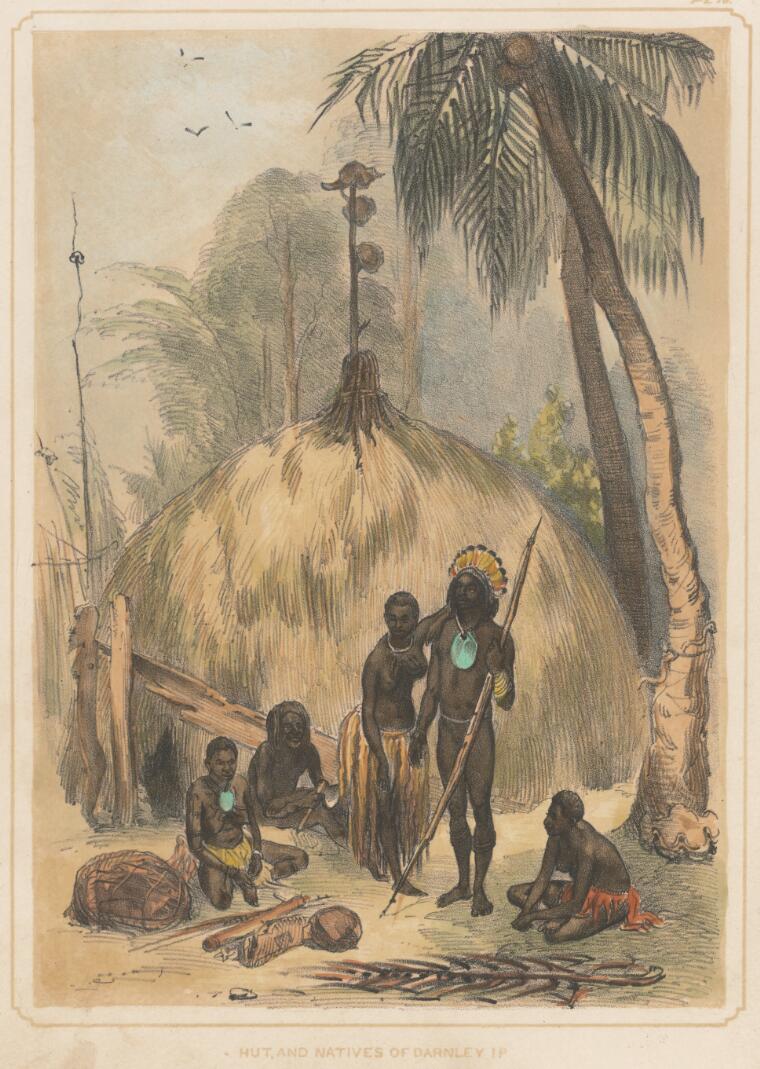
Canoe of Darnley Island
This sketch depicts Darnley Islanders on a traditional type of canoe in 1849. It highlights the Darnley Islanders as a seafaring people.
![Canoe of Darnley Id. [i.e. Island]](http://nla.gov.au/nla.pic-an10129035-v)
Oral History
Mer - Murray Island
Manuscripts
- Torres Strait Islands mission related correspondence and photographs, 1907-1933 (MS 10158)
This recent acquisition contains letter exchanged between a local Yorke Island girl Elma Mosby and niece of missionary Reverend William MacFarlane Grace Wyly. Further there is photos that depict the life of well known early Priests Lui and Passi. Also showing daily life on Thursday Island, Murray Island , Yorke Island and Dauan Island. Photographs of the erection of the All saints Church on Erub and earlier form of dancing equipment and lifestyles in the early 1900's and the heavy influence of Christianity.
- Ourselves writ strange (manuscript By Alan Marshall) (MS 405)
Alan Marshall records Nugget a man from Mer who is quoted in his journal as stating "But coloured boys dont they say, 'you give us education and we be all the same as white man are now; we live like white men; we think what white man thinks" when questioned about education and whether opportunity to gain greater qualifications. He also describes that the Army treats Islanders well.
Pictures
- Photograph album of Papua and the Torres Strait / Frank Hurley 1921
Frank Hurley (1885-1962) departed Sydney in December 1920 and spent three months among the islands of the Torres Strait. He traveled on to Papua via Daru Island and his visit to Papua lasted from 27 March to 19 August 1921. The islands in this album include Darnley, Mabuaig, Murray and the Thursday Islands and captures aspects of everyday life for Islanders. All of the images in this album are of people who are yet to be identified. The following two photographs are from this album:
Murray Island Dancers

Pantomime dancers - Murray Island
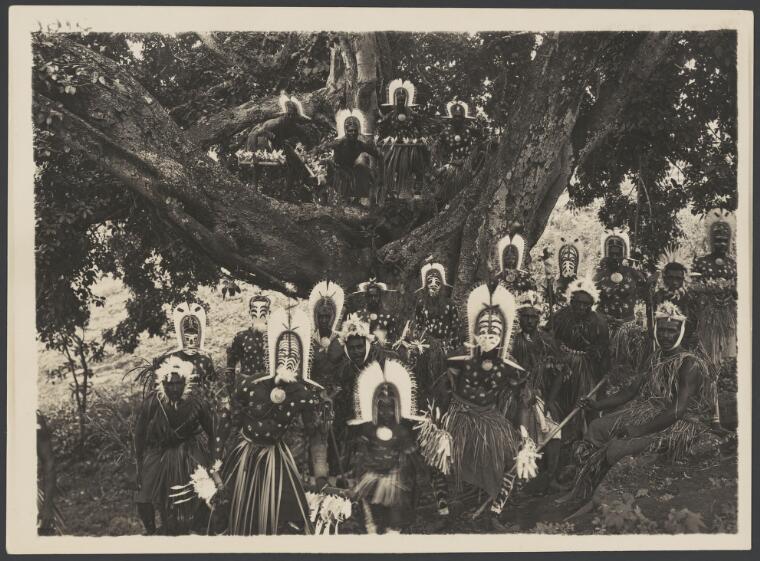
- Album of views of the Torres Strait Islands, Queensland, 1928-1929 / Charles Maurice Yonge
This album contain 114 photographs and is part of the Great Barrier Reef Expedition, 1928-1929 photographic collection. The images capture aspects of everyday life for Islanders and include people who are yet to be identified. The following are a selection:
Main Road though the village, Meer Island, Queensland, ca. 1928
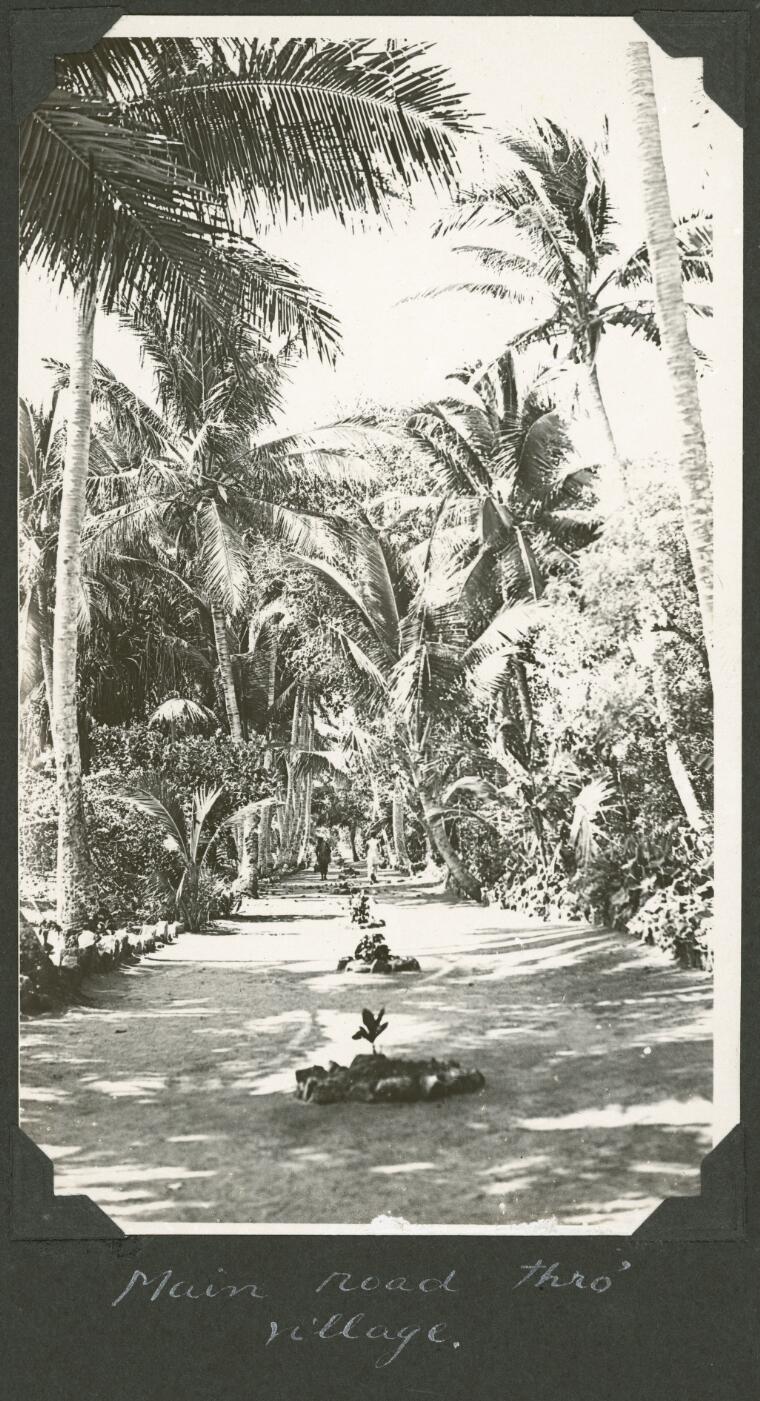
Old Style of House, Meer Island 1928
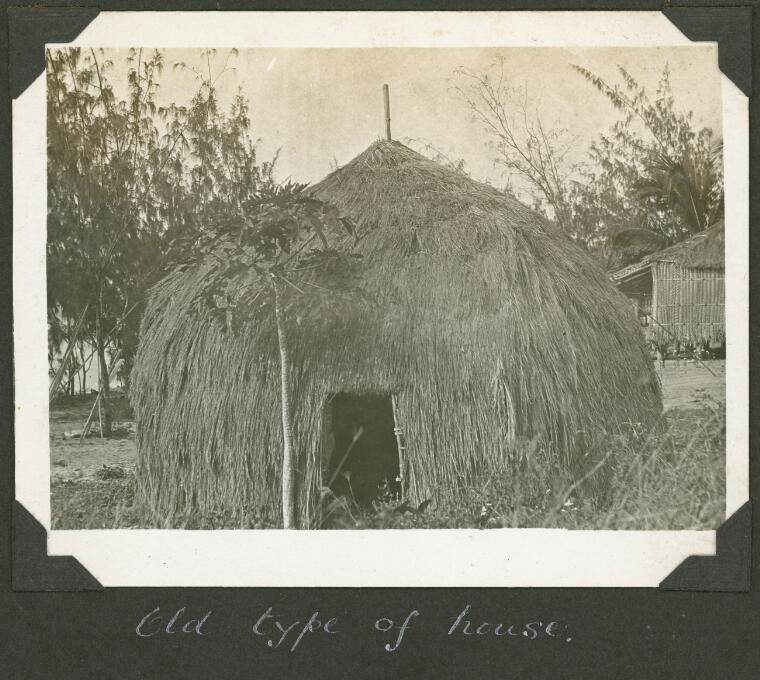
Death feast, Meer Island, Queensland ca. 1928
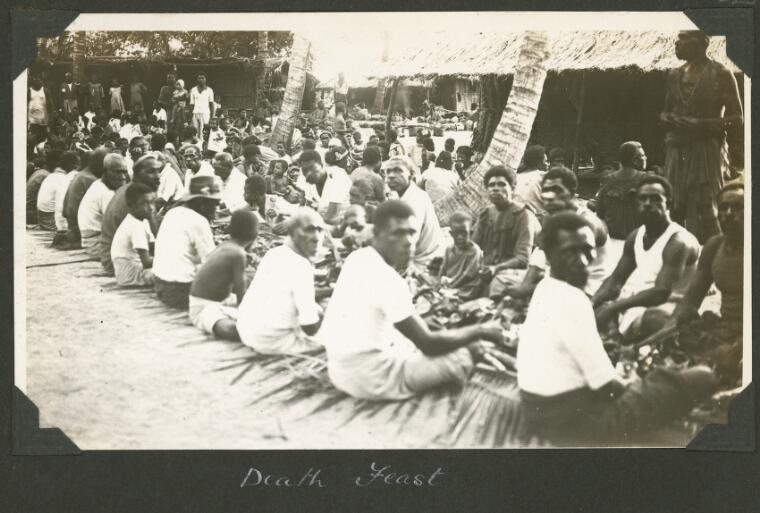
Modern type of House, Meer Island ca. 1928
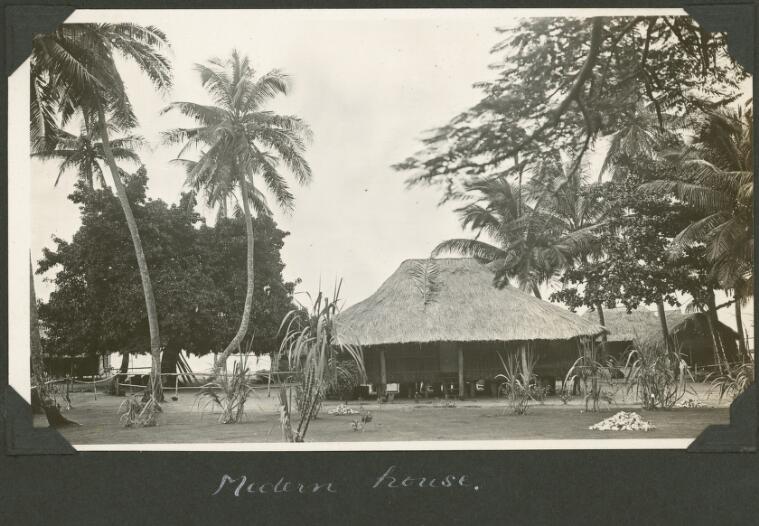
Oral History

